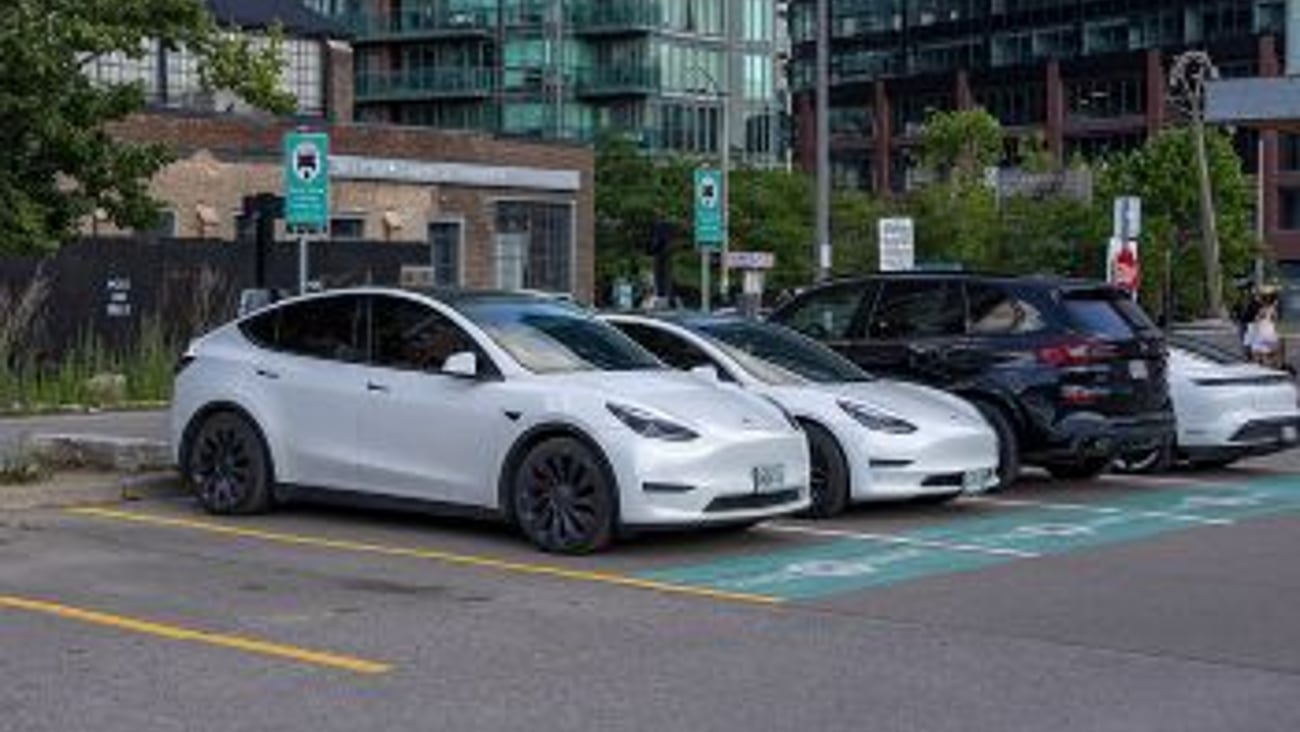Could the tariff spat upend Canada’s electric vehicle future?
The North American automotive manufacturing market is one of the most integrated in the world. It has been built up over sixty years of cooperation between Canada and the United States, from the Automotive Product Agreement (1965) that set the groundwork for U.S./Canada Free Trade Agreement (1989) to the later North American Free Trade Agreement (1997) and, in 2020, when it was renegotiated as the U.S.-Canada-Mexico Agreement (USMCA).
Critical parts needed to make vehicles may cross the Canadian and U.S. border several times—leveraging economies of scale, just-in-time-manufacturing, and country-specific expertise—before they are used in producing vehicles in Canada, the U.S. and Mexico.
With the transition to electric vehicles, the same mechanisms are used in manufacturing and automotive companies are investing heavily in building new plants and manufacturing facilities to produce the batteries and other critical components.
The province of Ontario and the Federal Government have made significant investments in electric vehicle manufacturing in Canada. In April of last year, Premier Doug Ford and then-Prime Minister Justin Trudeau stood together as Honda announced it would make a $15-billion electric vehicle investment in Ontario to build four new manufacturing plants that included Honda's first electric vehicle assembly plant and a new stand-alone EV battery plant at Honda's facility in Alliston, Ont. Hanon Systems, a global automotive parts supplier, announced last year that it would be investing $155 million to build a new 284,200-sq.-ft. facility in Woodbridge, Ont. to manufacture critical components for electric vehicles.
These investments are driven by the growing adoption of electric vehicles on both sides of the border. In Canada, S&P Global Mobility reports that adoption of zero-emissions vehicles continued to grow last year with Canada hitting an 15.2% zero-emissions vehicle adoption rate for the year. This rapid adoption has driven a robust growth in electric vehicle chargers across Canada, with Natural Resources Canada (NRCan) reporting in the last 12 months Canada saw 6,586 new public charging ports at 1,559 new stations across the country.
Tariffs, the great disruptor
The industry’s growth is now under threat from U.S. President Trump’s announcement that he will impose a 25% tariff on goods and autos coming from Canada into the United States—and he has not ruled out making those tariffs higher. One of the stated goals of the tariffs (reasons for the tariffs seem to change often) is to bring auto manufacturing back to the United States.
While all analysts say such a desire is near impossible and prohibitively expensive with how integrated the industry is, and would bring any real benefits to vehicle buyers, the threat alone has created anxiety in the industry.
“I would say the North American auto industry as a whole is really suffering from this trade war, and all the uncertainty that it is creating,” says Joanna Kyriazis, director of public affairs and clean transportation lead with Clean Energy Canada. “Everything, from vehicle assembly plants and vehicle parts manufacturers are all getting hurt in this trade war. And Canada’s electric vehicle and battery manufacturing industry is particularly vulnerable because it is just starting to get off the ground. It is important to remember that Canada’s electric vehicle and battery industry is of strategic importance for our country and integral to our long-term competitiveness.”
Kyriazis adds the constant threats of tariffs is starting to cause worries amongst manufacturers and parts suppliers across the entire automotive manufacturing industry in North America. Tariffs would disrupt critical supply chains, especially those that supply the key components.
“It is creating a lot of concerns when it comes to investments in Canada’s auto sector, concerns that those investments could flee and go to the U.S.,” she adds.
Pressures and fall out
In 2023, production at GM’s Cami Assembly plant in Ingersoll, Ont., where the BrightDrop electric van is produced, went offline for a significant period when a supplier had difficulty delivering critical battery modules for two models. Tariffs concerns are also behind the recent announcement that Stellantis is pausing work on its next-generation Jeep Compass compact SUV, including retooling the assembly plant in Brampton, Ont. where it is to be built, because of the uncertainties around the tariffs.
Emma Jarratt, executive director with Electric Autonomy, says what needs to be remembered is that today’s automotive manufacturing, for both traditional gasoline and electric vehicles, operates under what is called ‘just-in-time’ manufacturing.
“They are not building vehicles and then stockpiling them for the next 12 months,” she adds. “They are building them a week or two out, so this model is very susceptible to market fluctuations, in this case, fluctuations that are manmade, such as tariffs.”
Jarratt says the question being asked by many is if the tariffs are put into place at the full 25% and are long-lasting, might they cause consumers to forego vehicle purchases as prices increase or even turn away from electric vehicles; particularly if the investments being made in building facilities to manufacture batteries and other critical components for electric vehicles are scaled back or put on hold entirely.
Made-in-Canada solutions
Stephen Bieda, director of the EV Society, says tariffs certainly have the potential of disrupting the growing acceptance of electric vehicles amongst Canadians, especially if the tariffs raise prices significantly or reduce their number from disrupted supply chains.
Bieda does, however, say that tariffs may have a hidden upside—they can spur even more investment in the industry in Canada to avoid those supply chain disruptions.
“We are certainly seeing a focus now on looking for ways for Canadian manufacturing to innovate and to focus on technologies here that are made in Canada, and maybe even creating an entire manufacturing solution in Canada for vehicle productions, reducing or even eliminating those trips of parts across the border,” he says.
Forging ahead with charging networks
And he has not seen in Canada any scaling back by electric vehicle charger producers. Some are looking to source more of their critical components from non-U.S. suppliers, such as Europe, and some companies, such as Flo, are not reliant on U.S. suppliers for any pieces of their chargers.
“And we have seen a nice growth in the availability and reliability of chargers and the infrastructure,” he adds. “It is moving in a positive direction and there are some exciting announcements from companies such as Parkland about expanding their [electric vehicle charging] network, so we could see going forward some dramatic changes in charging access in Canada, with more charge access points coming.”






